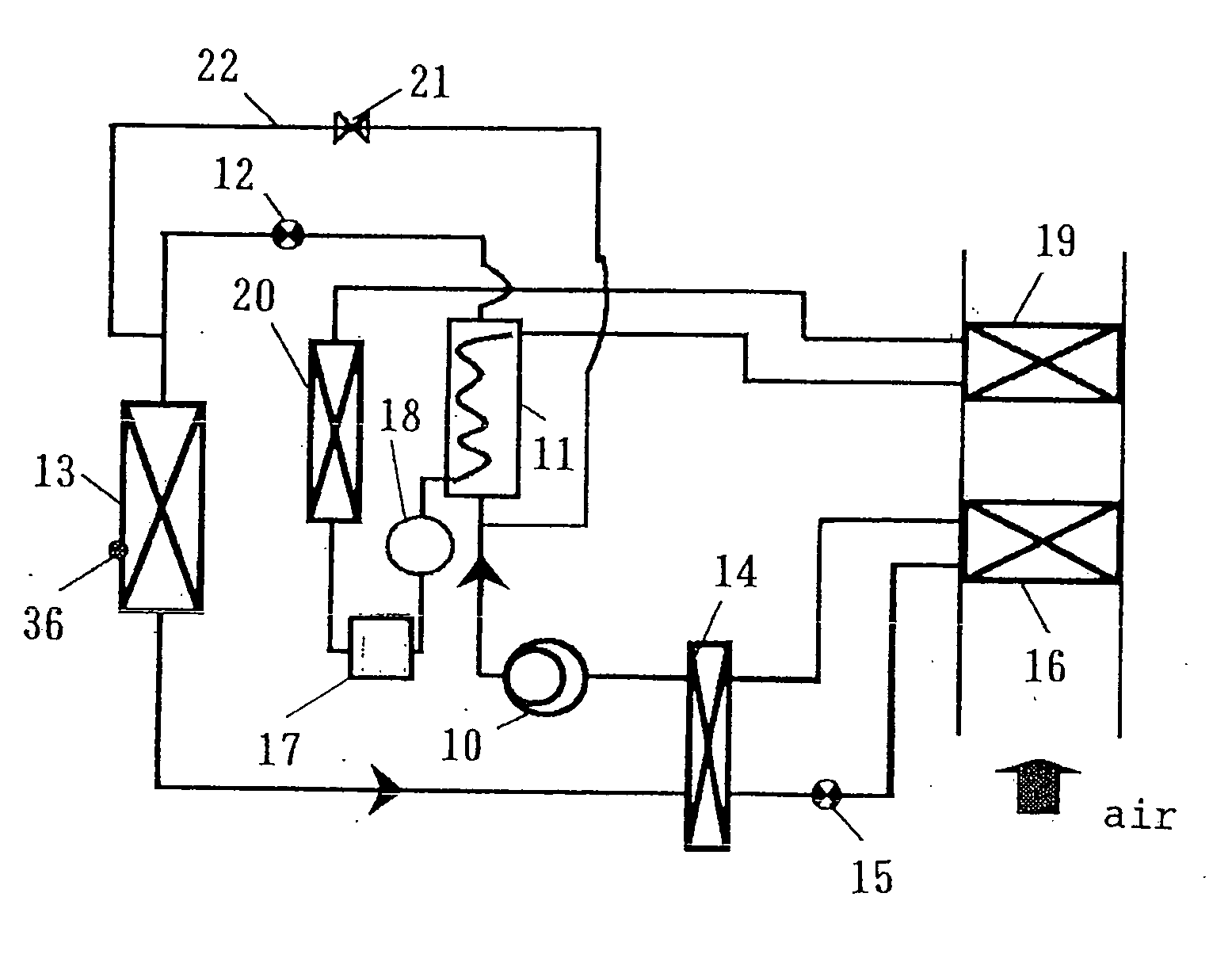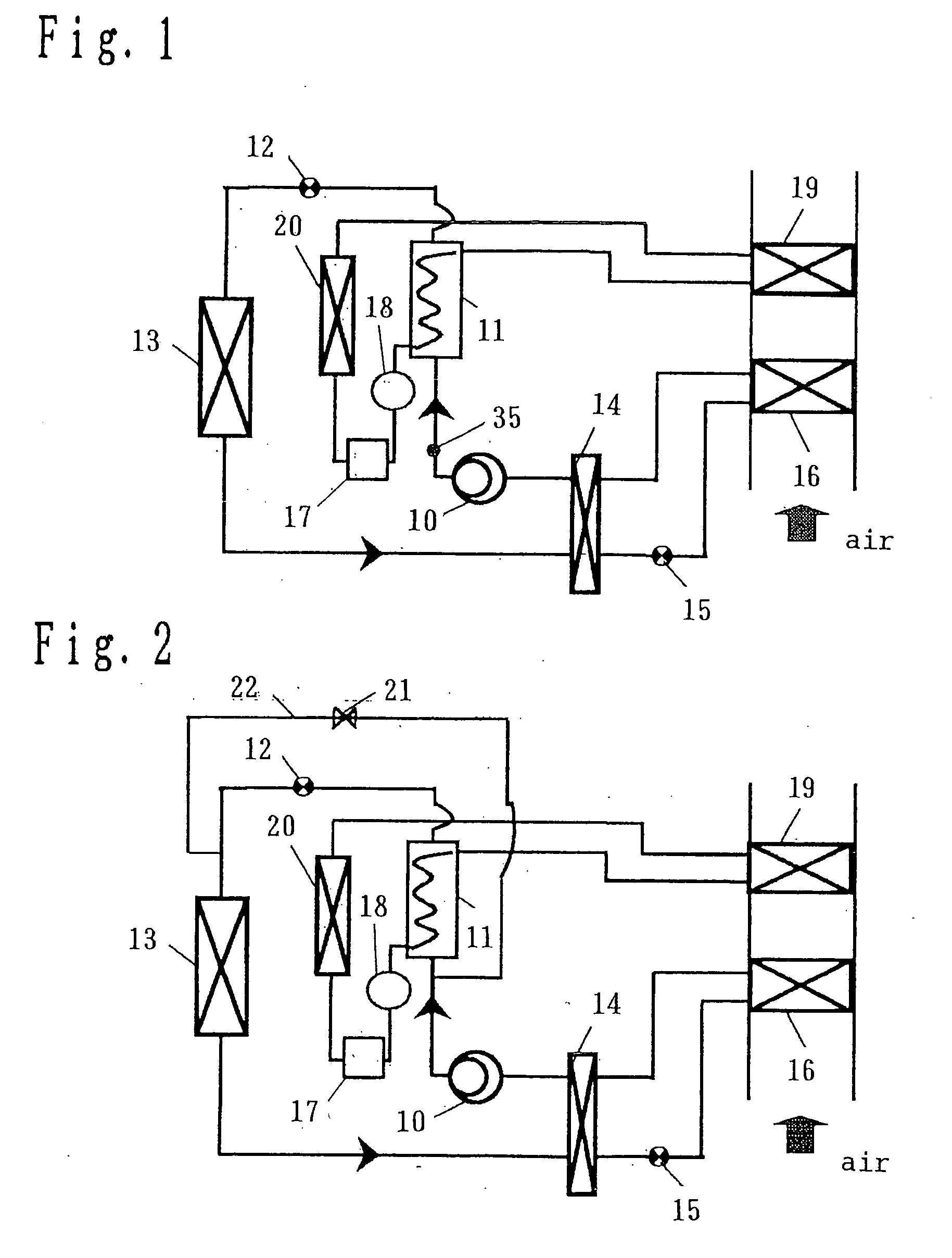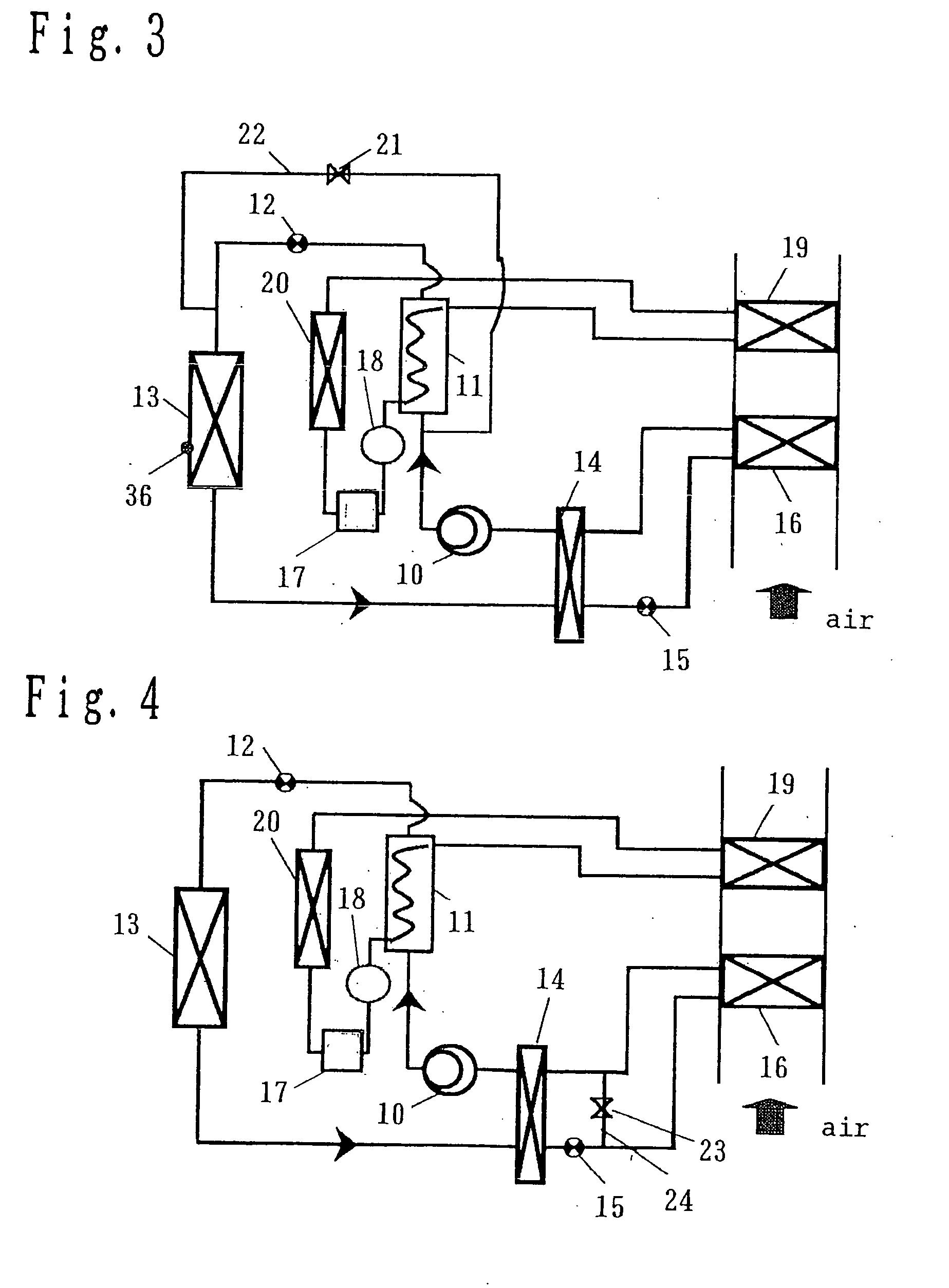Refrigerating cycle device
a cycle device and refrigerant technology, applied in the field of refrigerating cycle devices, can solve the problems of toxicity, weak flammability of refrigerant, and drawback of having a large earth warming coefficient, and achieve the effect of efficient operation
- Summary
- Abstract
- Description
- Claims
- Application Information
AI Technical Summary
Benefits of technology
Problems solved by technology
Method used
Image
Examples
embodiment 1
[0106]FIG. 1 is a constitutional view showing a refrigerating cycle device according to embodiment 1 of the present invention. The refrigerating cycle uses a CO2 refrigerant as a working fluid and adopts a compressor 10, a refrigerant-water heat exchanger 11, a first decompressor 12, a first heat exchanger 13, an internal heat exchanger 14, a second decompressor 15, a second heat exchanger 16 as basic constitutional elements thereof. An outlet-side line of the first heat exchanger 13 and a suction line of the compressor 10 which is arranged at an outlet of the second heat exchanger 16 are subjected to a heat exchange by the internal heat exchanger 14. On the other hand, the hot water cycle is constituted of a pump 18 which circulates hot water heated by the refrigerant-water heat exchanger, a heater core 19, a radiator 20 and a power engine 17.
[0107] Here, the operation of the refrigerating cycle device shown in FIG. 1 at the time of space cooling is explained.
[0108] First of all,...
embodiment 2
[0116] With respect to the embodiment 2 of the present invention, the manner of operation of the second decompressor 15 at the time of space heating / dehumidifying in the refrigerating cycle device shown in FIG. 1 is explained in conjunction with a flow chart shown in FIG. 8. The second decompressor 15 is a valve which is capable of adjusting a flow rate.
[0117] At the time of space heating / dehumidifying, a discharge temperature Td detected by compressor discharge temperature detection means 35 and a target set discharge temperature Tx are compared in step 40. Then, when Td is equal to or more than Tx, this implies a state that the refrigerant is in short and processing is advanced to step 41 in which a control is made to increase the degree of opening of the second decompressor 15. Accordingly, the intermediate pressure in the first heat exchanger 13 is lowered so as to lower the refrigerant holding quantity in the first heat exchanger 13 whereby the refrigerant shortage state can b...
embodiment 3
[0120]FIG. 2 is a constitutional view showing a refrigerating cycle device according to the embodiment 3 of the present invention. Points which make this embodiment different from the embodiment 1 are explained hereinafter. The refrigerating cycle device includes a first bypass circuit 22 which connects an outlet of the compressor 10 and an inlet of the first heat exchanger 13 by way of a first open / close valve 21.
[0121] First of all, the manner of operation of the refrigerating cycle device shown in FIG. 2 at the time of space cooling is explained. At the time of space cooling, the second decompressor 15 performs an operation as a decompressor while fully closing the first decompressor 12 and fully opening the first open / close valve 21. Accordingly, by making the refrigerant flow in the first bypass circuit 22 by opening the first open / close valve 21, it is possible to prevent the generation of pressure loss of the refrigerant in the refrigerant-water heat exchanger 11.
[0122] Nex...
PUM
 Login to View More
Login to View More Abstract
Description
Claims
Application Information
 Login to View More
Login to View More - R&D
- Intellectual Property
- Life Sciences
- Materials
- Tech Scout
- Unparalleled Data Quality
- Higher Quality Content
- 60% Fewer Hallucinations
Browse by: Latest US Patents, China's latest patents, Technical Efficacy Thesaurus, Application Domain, Technology Topic, Popular Technical Reports.
© 2025 PatSnap. All rights reserved.Legal|Privacy policy|Modern Slavery Act Transparency Statement|Sitemap|About US| Contact US: help@patsnap.com



